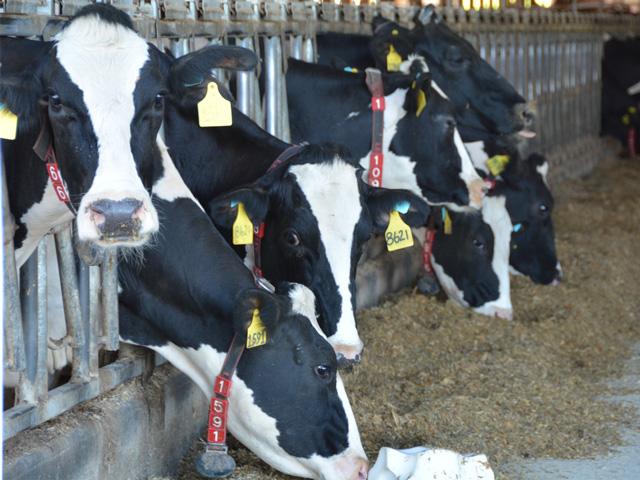Dairy Industry Moves Past Bottleneck
Farmers Assess Life After COVID-19 as Milk Prices Move Higher
OMAHA (DTN) -- When the COVID-19 economic shutdown took hold this spring, dairy farmer Ben Gingg was asked by his local cooperative to cut milk production 10% at his 4,000-cow operation at Buckeye, Arizona.
Farmers across the country were dumping milk in April as food services closed down and grocery stores were limiting milk purchases.
In all, the 69 dairies in Arizona dumped about 12 million pounds of milk in April and a little more in May. Food services are now coming back online and product is moving again.
"Since then, they started taking more product," Gingg said during a Farm Credit webinar on Thursday.
"The bottleneck in our situation was our cheese customer turned back on their need. We had close to 2 million pounds on our hands we could not dry. We're sure glad all the milk is being picked up again."
Class III milk futures hovered just above $16 per hundredweight in late March before the economic shutdown. Prices tumbled to $11.23 per cwt during the first of May. Since then, milk prices have surged on tighter supplies, moving back to just above $20 per cwt.
Alan Bjerga, senior vice president for communications for the National Milk Producers Federation, said during an interview with WEKZ radio in Janesville, Wisconsin, this week that farmers have made a dramatic turnaround.
"I don't think anyone expected this robust of a turnaround," he said.
P[L1] D[0x0] M[300x250] OOP[F] ADUNIT[] T[]
"Seems like the catastrophe may be averted especially when you put into place not just the price turnaround but the federal backstop that has been implemented."
Bjerga said government programs including the food box program have helped re-establish supply chains.
Gingg said the future likely will include a higher percentage of milk being delivered and sold at retail.
In Arizona, he said dairies expect a new processing plant to be completed soon. This will help farmers move more liquid milk to market.
During the COVID-19 shutdown dairies were among many companies receiving assistance through the Payroll Protection Program. Producers on the webinar said they've all benefitted from Dairy Revenue Protection as well.
Greg Sabolik, a dairy farmer from Kensington, Minnesota, said his farm has avoided the nightmare scenario that played out. The fourth-generation farmer in west central Minnesota runs a dairy partnership with his brothers on a 500-cow operation that includes about 1,600 acres of corn and soybeans.
"We have not had to dump milk," Sabolik said. "Our milk goes to a co-op and orders have been strong. I don't think we all knew what was going to happen. We're going to come out of this fairly unscathed."
Sabolik said he hopes the industry has learned from the COVID-19 challenges and will create new ways to make sure milk gets to where it needs to be even during supply chain disruptions.
"The food-supply system was unable to be nimble enough to move product," Sabolik said.
"We had warehouses full and couldn't get it into consumers' hands. No one wants to see product go to waste. Hopefully we can develop a system so that doesn't happen again."
In addition, Sabolik said he hopes markets will "equalize" without "anymore intervention."
Canandaigua, New York, farmer John Knopf said he believes the industry as a whole may experience a three-year negative effect from the shutdown.
"Half of the supply chain goes through institutions," he said.
"In the future it is quite likely we'll have to look at how to change to fill the needs in the marketplace. The dairy industry isn't going away but it will certainly have to look a lot different."
Todd Neeley can be reached at todd.neeley@dtn.com
Follow him on Twitter @toddneeleyDTN
(c) Copyright 2020 DTN, LLC. All rights reserved.




